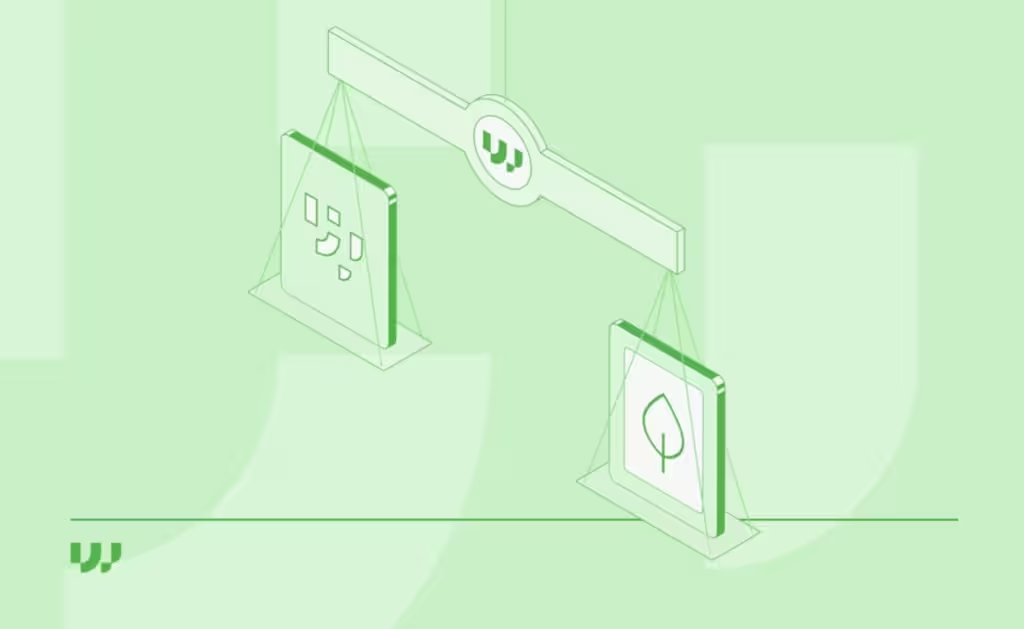
The digital industry currently accounts for approximately 2-5% of global emissions, surpassing even the aviation sector. Since the Paris Agreement, average web page sizes have grown by over 70% for desktop users and 140% for mobile users. Between 2015 and 2021, the number of internet visitors rose by 60%, while internet traffic surged by 440%. In fact, if the Internet were considered a country, it would rank among the top five polluters globally.
Overview
The guidelines should be seen as a starting point in a sustainability journey; they cover the following:
User Experience Design
Covering research and ideation, journey design, content and assets, and quality assurance.
Research and Ideation Guidelines
- Impact Mapping: Identify all areas where your digital product may affect people and the planet.
- Stakeholder Assessment: Evaluate the concerns of all stakeholders, as well as the needs of both visitors and non-visitors, and establish appropriate testing policies.
- Low-Carbon Tools: Consider using low-carbon tools during the ideation phase.
Journey Design Guidelines
- Seamless Experience: Create a lightweight, frictionless experience using established design patterns to ensure clear navigation and respect visitor attention without manipulation.
- Usable Forms: Implement forms that are accessible and user-friendly, providing assistance for errors.
- Useful Notifications: Only use notifications that genuinely enhance the visitor experience.
Content and Asset Guidelines
- Sustainable Assets: Avoid unnecessary assets, and when they are essential, take a sustainable approach to images, media, animations, typefaces, and documents.
- Alternative Formats: Offer alternatives for visual and audio content, and facilitate speech-based browsing of your materials.
- Purposeful Writing: Write with intention, ensuring your content is accessible and easy to understand.
Quality Assurance Guidelines
- Transparent Processes: Maintain open working and documentation processes, such as design systems.
- Regular Audits: Conduct routine audits and testing, including evaluations of value, usability, and compatibility, using insights from visitor journey tracking to identify issues and opportunities.
Web Development
Covering development approach, code minimization, code coherence, and code security
Development Approach Guidelines
- Sustainable Metrics: Identify indicators and metrics that promote sustainable development practices, incorporating sustainability as a key success criterion in your technical requirements.
Code Minimization Guidelines
- Reduce Bottlenecks: Focus on minimizing compute load on visitors’ devices by eliminating rendering blockages, implementing code splitting, managing dependencies, leveraging native features, rigorously evaluating third-party code and services, and minifying all code.
- Eliminate Redundant Code: Use tree shaking to remove unnecessary code, avoid duplication, streamline queries, and judiciously employ the latest JavaScript and APIs.
Code Coherence Guidelines
- Proper Markup: Ensure your code is interpretable by using HTML and metadata correctly, adhering to accessibility standards, enabling code-based navigation, avoiding deprecated or proprietary code, providing expected file formats, and following the latest web standards for assets.
- Support Low-Carbon Choices: Implement a mobile-first layout and adapt to user preferences to facilitate low-carbon decisions for your visitors.
Code Security Guidelines
- Stay Updated: Utilize the latest stable version of your coding language and regularly verify the security of your scripts.
Hosting, Infrastructure and Systems
Covering environment commissioning, minimizing environment and data, and minimizing human disruption.
Environmental Management Guidelines
- Choose Sustainable Hosting: Select a hosting provider committed to sustainability, support asynchronous processing, utilize the lowest suitable infrastructure tier, and minimize the creation of additional environments.
- Optimize Data Transfer: Reduce the number of environments and data transfer by compressing files, managing duplicate data, storing information based on visitor needs, optimizing caching, refreshing data only when necessary, and employing CDNs and edge caching.
- Automate Processes: Minimize human disruption by automating tasks where possible and effectively managing errors and redirects.
Business Strategy and Product Management
Covering reporting, disclosure, strategy, and policies from both an organizational and website / product level
Organizational Reporting and Disclosure Guidelines
- Assign Sustainability Roles: Make sustainability a core responsibility for team members across the organization.
- Set Clear Goals: Define measurable sustainability goals and metrics, and regularly verify and report on them to inspire others to follow your lead.
Organizational Strategy and Policies Guidelines
- Impact-Driven Business Models: Create business models focused on positive impact that actively engage all stakeholders, ensuring economic benefits are shared with employees, suppliers, and the broader community.
- Implement Inclusive Policies: Develop and enforce policies that prioritize Justice, Equity, Diversity, and Inclusion (JEDI), as well as ethical finance, philanthropy, responsible supplier partnerships, e-waste reduction, data privacy, and mindful use of emerging technologies.
- Employee Induction: Provide comprehensive training for employees on these policies and practices.
Product or Website Strategy Guidelines
- Assess Product Necessity: Determine whether the product or website is needed. If so, outline its requirements and establish an ethical, sustainable product strategy, estimating its emissions and creating budgets around them. Communicate the impact of user decisions to visitors.
- Ongoing Management: Once the product is live, implement a product management and maintenance strategy to ensure efficiency, facilitate continuous improvement, communicate changes transparently, and plan for its end-of-life.
- Utilize Open Source Software: Embrace open source software solutions to promote collaboration and sustainability.
Summary
The Web Sustainability Guidelines (WSG) 1.0 outlines how to design and implement digital products and services that prioritize people and the planet. These guidelines present best practices grounded in measurable, evidence-based research and are intended for end-users, website creators, product owners, stakeholders, tool developers, educators, and policymakers. They align with both the Sustainable Web Manifesto and the Manifesto for a Humane Web.




